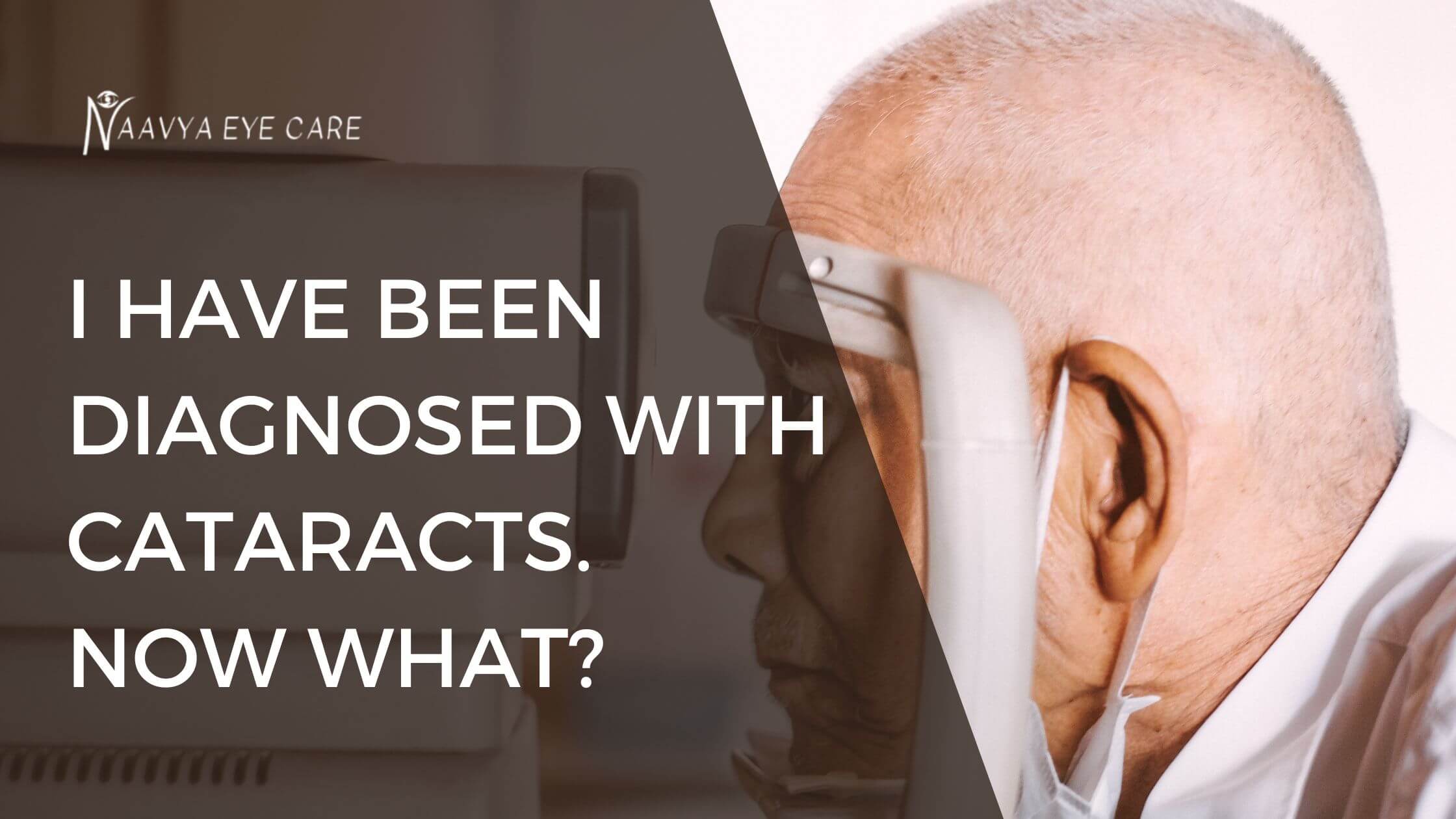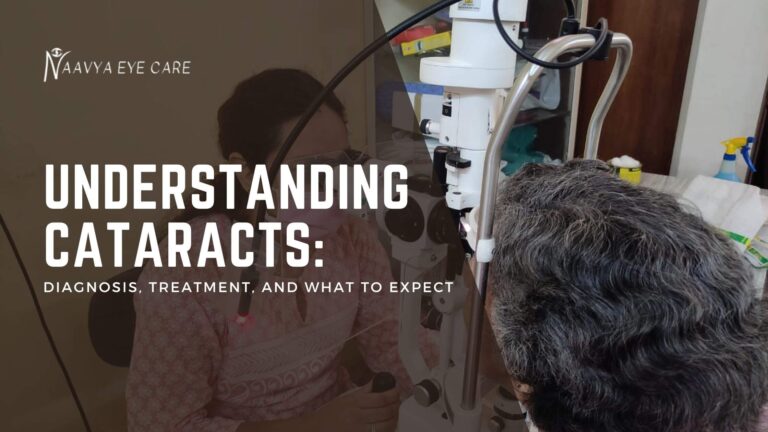
A cloudy lens in your eye?
Don’t panic. A cataract diagnosis, while concerning, often has manageable solutions. This article tackles common questions and concerns, empowering you to navigate this journey confidently.
What to do after a Cataract Diagnosis:
- Schedule a follow-up appointment with your ophthalmologist. Schedule an appointment with an eye specialist or ophthalmologist for a comprehensive eye examination. They will assess the severity of your cataracts and discuss treatment options.
- Understand the stages: Cataracts progress gradually, categorized into four stages:
Stage 1: Early, minimal vision changes.
Stage 2: Vision becomes hazy, especially at night.
Stage 3: Significant vision impairment, affecting daily activities.
Stage 4: Mature cataract, causing severe vision loss. - Consider treatment options: Surgery is the only treatment for cataracts, but you may not need it immediately. Depending on the progression of your cataracts and your visual needs, your doctor may recommend conservative management or cataract surgery. We’ll delve deeper into treatment options later in this article.
What do Stage 1 Cataracts Look Like?
Cataracts develop gradually, and the early stages may not cause noticeable symptoms. However, as the cataracts progress, you may experience:
- Blurred or cloudy vision
- Increased sensitivity to glare, especially while driving at night
- Difficulty seeing in low-light conditions
- Fading or yellowing of colors
In stage 1 cataracts, these symptoms may be mild and may not significantly impact daily activities. Regular eye exams are essential for monitoring cataract progression.
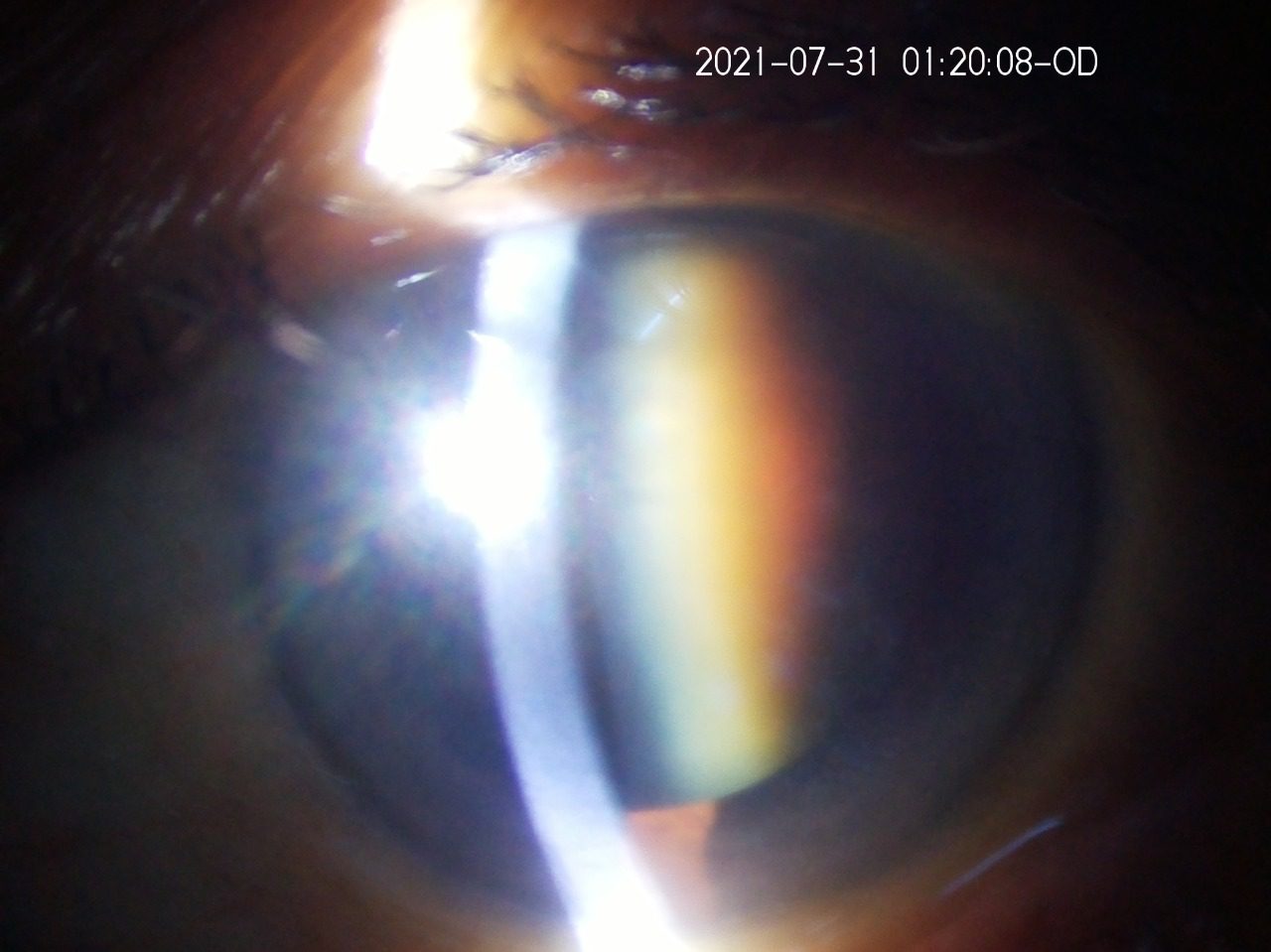
Grade 3
Cataract
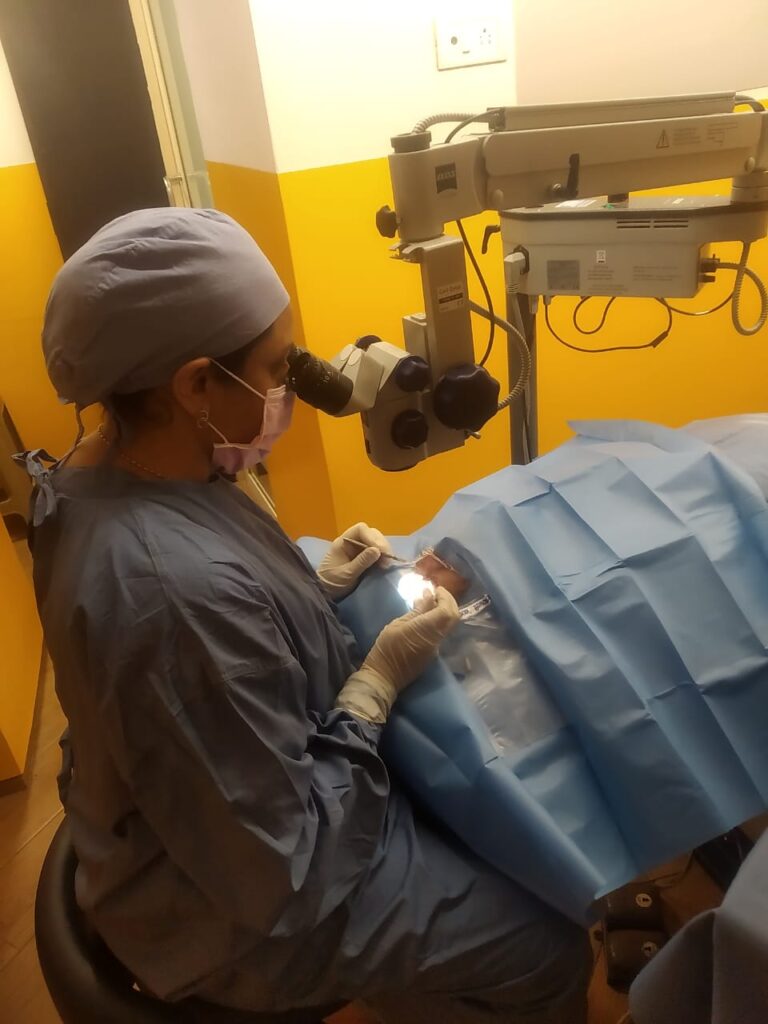
Is it OK to delay cataract surgery?
The decision to undergo cataract surgery depends on various factors, including the impact of cataracts on your quality of life and visual function. In some cases, delaying surgery may be acceptable, especially if your symptoms are mild and not significantly affecting your daily activities. However, consider these points:
Progressively worsening vision: As cataracts mature, vision deteriorates, impacting driving, reading, and other activities.
Complications in later stages: Delaying surgery might increase the risk of complications like lens hardening, making surgery more complex.
Impact on quality of life: If cataracts significantly hinder your daily routine and enjoyment, consider surgery sooner to regain clear vision.
What Happens if Cataract Surgery is Delayed?
Delaying cataract surgery may lead to worsening of symptoms and further deterioration of vision quality. Some potential consequences of delaying surgery include:
- Increased difficulty with daily tasks such as reading, driving, or watching television
- Higher risk of falls or accidents due to impaired depth perception
- Reduced quality of life and independence
It’s essential to discuss the risks and benefits of delaying surgery with your ophthalmologist to make an informed decision.
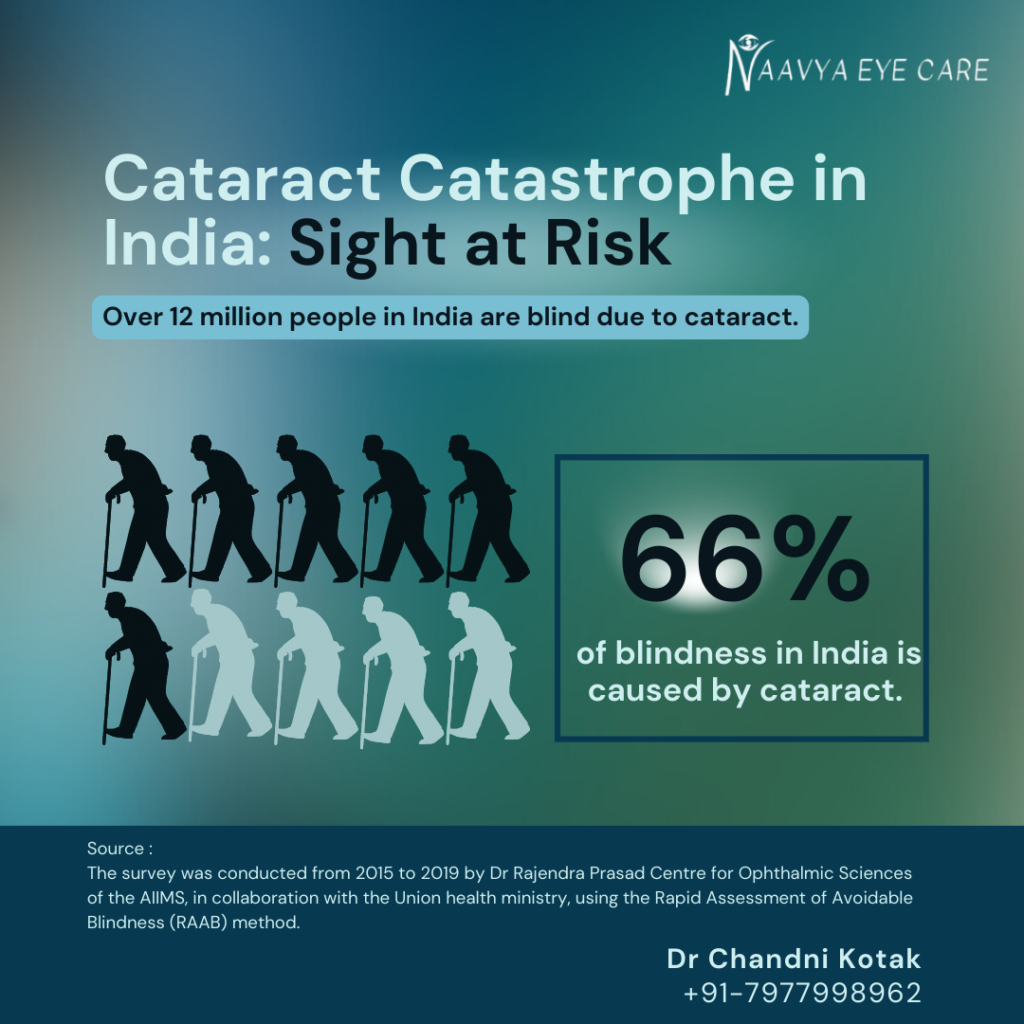
How quickly do cataracts grow?
Cataracts typically develop slowly over time, but the rate of progression can vary from person to person. Factors such as age, overall health, and lifestyle habits may influence how quickly cataracts develop. In some cases, cataracts may progress rapidly, while in others, they may remain stable for years. Regular eye exams are crucial to monitor the progression and determine the optimal timing for surgery.
Who Should Avoid Cataract Surgery?
While cataract surgery is generally safe and effective, there are certain situations where it may not be recommended:
- Uncontrolled severe medical conditions: Active infections or unstable medical conditions require stabilization before surgery.
- Anatomical eye issues: Preexisting eye problems like severe glaucoma or retinal detachment might require additional considerations.
Does cataract surgery correct vision to 20/20?
Cataract surgery is designed to improve vision by removing the cloudy lens and replacing it with a clear artificial intraocular lens (IOL). While many patients experience significant improvements in vision after surgery, achieving 20/20 vision is not guaranteed for everyone.
Factors such as the severity of cataracts, other eye conditions, and individual differences in healing and visual recovery may affect the final visual outcome. However, the majority of patients report significant improvements in vision and quality of life following cataract surgery.
Doctor Recommendations:
Your ophthalmologist will provide personalized recommendations based on your specific needs and medical history. However, general recommendations for managing cataracts may include:
- Regular eye exams to monitor cataract progression
- Lifestyle modifications such as quitting smoking and maintaining a healthy diet
- Use of prescription eyeglasses or contact lenses to improve vision
- Consideration of cataract surgery if symptoms significantly impact daily activities or quality of life
Treatment Options & What Happens During Cataract Surgery:
Cataract surgery is a common and highly effective procedure for treating cataracts. During surgery, the cloudy lens is removed and replaced with an artificial lens to restore clear vision. The surgery is typically performed on an outpatient basis and involves the following steps:
- Anesthesia: Local anesthesia is administered to numb the eye and minimize discomfort during the procedure.
- Incision: A small incision is made in the eye to access the cataract-damaged lens.
- Lens Removal: The cloudy lens is broken up using ultrasound technology and removed from the eye.
- Intraocular Lens Implantation: A clear artificial lens, known as an intraocular lens (IOL), is inserted to replace the natural lens and restore clear vision.
- Incision Closure: The incision is closed with self-sealing stitches or allowed to heal naturally.
- Postoperative Care: After surgery, patients may experience mild discomfort or temporary changes in vision as the eye heals. Prescription eye drops and follow-up appointments with the ophthalmologist are essential for monitoring recovery and optimizing visual outcomes.
Conclusion:
Being diagnosed with cataracts can be concerning, but with timely intervention and appropriate treatment, many individuals can enjoy improved vision and quality of life. If you have been diagnosed with cataracts, consult with an experienced ophthalmologist to explore options and develop a personalised treatment plan tailored to your needs. Remember to prioritize your eye health and seek professional guidance for any concerns or questions you may have.

Doctor Profile
Dr. Chandni Kotak
DNB, FAICO, MNAMS, MBBS
Naavya Eye Care
Simla House, E block, G – 74, Nepeansea Road, Malabar Hill, Mumbai, Maharashtra, 400036
📞 07977998962
